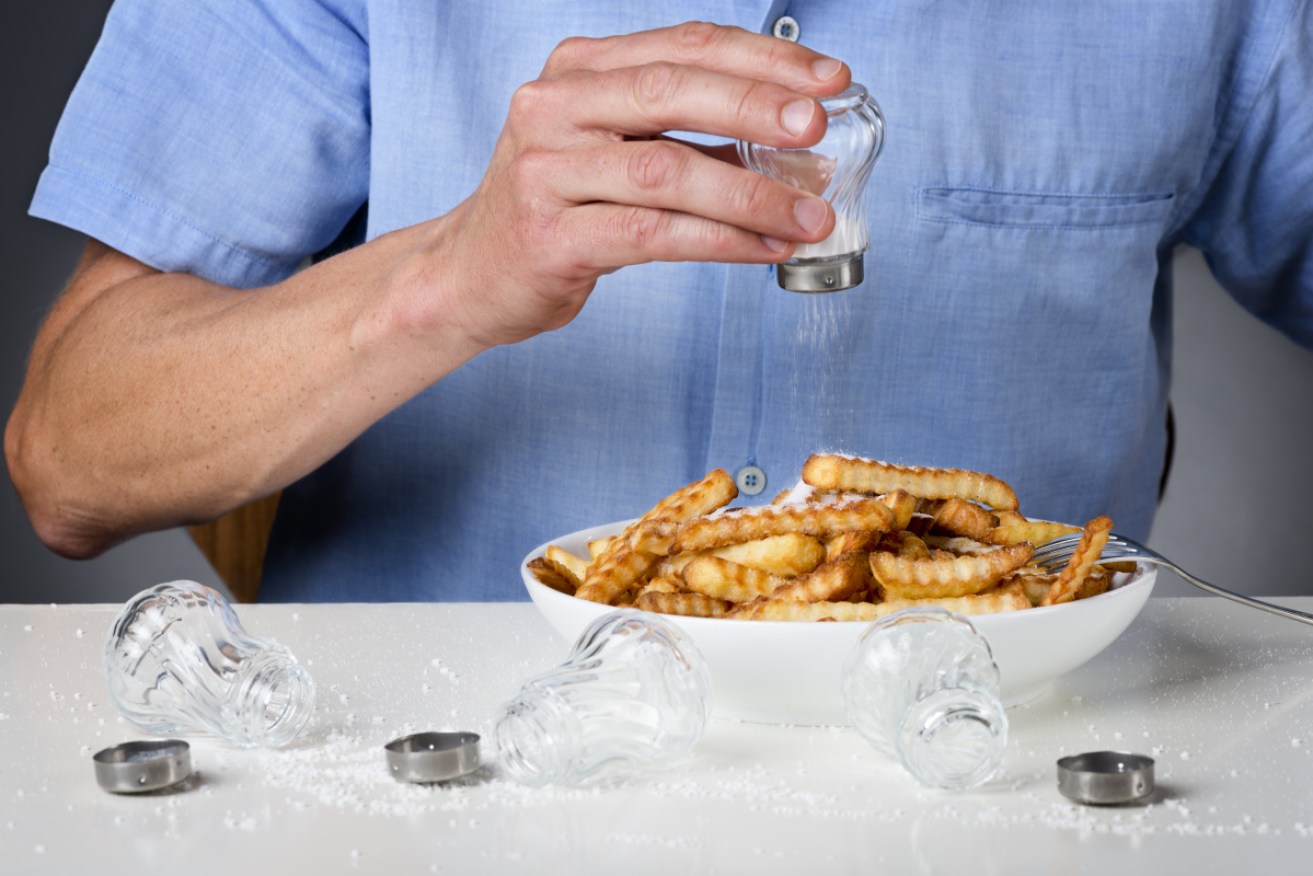Why eating too much salt is way too easy – and how to cut back


The average Australian consumes more than twice the salt they should. Photo: Getty
Treating yourself to a tasty ham and cheese toasty for a quick work-day breakfast? What about that fast-food weekend treat or ready-meal easy dinner?
Then it’s diner beware, because these are just the kind of foods that are chock-full of harmful hidden salt – and we’re already consuming lots more salt than we should.
The Victorian government’s Better Health Channel says Australians take in more than two teaspoons of salt a day – that’s more than double the maximum recommended intake (5 grams) and much more than the 1-2 grams a day we actually need to keep our bodies functioning smoothly.
To further complicate the issue, while most of us are aware that Australians generally eat too much salt, many don’t realise we’re part of the problem.
In 2017, Deakin University’s Institute for Physical Activity and Nutrition found that 84 per cent of people thought Australians ate too much salt. But only 28 per cent thought they were among those overdoing it.
The big problem for most of us is processed and convenience foods – everything from bread and cereal to takeaways.
Just one ham and cheese toasty contains about 60 per cent of the daily recommended intake of salt. Salad dressing, crackers and dip, breakfast cereals and even sweet foods such as doughnuts and muffins will all add a surprising amount more.
Even foods we already know are stacked with salt often hide more than we think. A single tablespoon of soy sauce contains 61 per cent of the recommended daily salt quota, and one teaspoon of fish sauce burns through a whopping 96 per cent, according to a November 2018 report by The George Institute for Global Health, VicHealth and the Heart Foundation.
The George Institute followed up that gloomy news with another report in March 2019 that analysed the salt content in children’s meals at KFC, McDonald’s, Hungry Jack’s and Subway.
It found some of the fast food giants served up single children’s portions that contained more than a day’s recommended salt intake. In addition, the outlets were using significantly more salt in some of their Australian meals than in the same food at their overseas stores – with experts blaming a lack of regulation.

Children’s meals from some fast food outlets have more than a day’s worth of salt in a single serve. Photo: Getty
Why does salt intake matter?
Our bodies use salt to circulate blood and tissue fluids. Overconsumption increases the chances of developing high blood pressure – a major risk factor for heart disease and stroke.
Heart Foundation dietitian Sian Armstrong said many of the risks were hidden.
“High blood pressure often doesn’t have any symptoms and, as many people are unaware they’re having too much salt and what their blood pressure is, it can be quite risky,” she said.
Consuming too much salt is also associated with kidney disease, stomach cancer, obesity and osteoporosis.
Where is salt hiding?
The lead author of the Deakin University study that found most of us woefully underestimate how much salt we consume, Dr Carley Grimes, said perceptions were skewed because it is added to so many foods.
In fact, 75 per cent of the salt in our diets comes from processed and packaged foods – and bread is the top source for Australians, according to Dr Grimes.
“What’s difficult with salt is it’s spread out across so much of the food supply,” she said.
“If you’re eating common everyday foods like bread, your salt intake may be high – not because bread is super salty but because we consume a fair bit of it.”
Clare Farrand, a public health nutritionist from The George Institute for Global Health, agreed: “The biggest and highest contributors of salt to the diet aren’t necessarily the foods that taste the saltiest but those foods we eat the most.”
She said other major contributors included cereal products and processed meats.
“Anytime you go the supermarket and choose processed, packaged foods and convenient options like ready meals, there is salt in these products, even though they don’t necessarily taste the saltiest,” she said.

Bread is surprisingly large contributor to a high-salt diet. Photo: Getty
How to reduce your salt intake
Focusing on a whole-food diet will help to reduce your salt intake, Ms Armstrong said.
“The best way to reduce the amount of salt you’re having is to eat a diet that’s based on fresh and minimally processed foods – lots of fruit, vegies, some grains, some dairy and some meat,” she said.
“Because these foods are naturally lower in salt, you’ll get the small amount you need without going overboard.”
If you buy packaged foods, look for no-salt, low-salt and salt-reduced options. Check the nutrition information panel and try to avoid products with more than 400 milligrams of sodium per 100 grams (even better, look for products with less than 120 milligrams per 100 grams).
“If you get stuck, just compare two or three products and pick the one with less sodium,” Dr Grimes said.
“If you do that on a few products like cheese, bread and breakfast cereal, that’s all going to add up to less sodium in your diet overall.”








